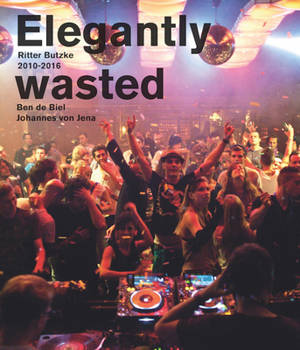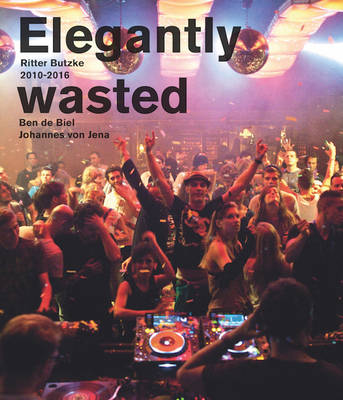
- Afhalen na 1 uur in een winkel met voorraad
- Gratis thuislevering in België vanaf € 30
- Ruim aanbod met 7 miljoen producten
- Afhalen na 1 uur in een winkel met voorraad
- Gratis thuislevering in België vanaf € 30
- Ruim aanbod met 7 miljoen producten
Zoeken
Omschrijving
» Dance it over« and » come by and let yourself go, « » Your brain urgently needs a vacation, « read the flyers for Ritter Butzke, and the result is, of course, » From euphoric to exhausted.« Ritter Butzke was set up by Johann von Jena and friends after he stumbled upon the vacant factory site of Aqua Butzke Works in Kreuzberg's Ritterstraß e in 2006 while searching for a temporary party location. The club operated illegally from March 2007 to January 2009, was shut down by authorities, and reopened legally in 2010. » It was probably the largest illegal club in the world ... I believed we were living the best time of our lives in this massive speakeasy - free from bureaucracy, accounting, regulations, and staff schedules. I worried that the fun, which came with freedom, would quickly fade.« But that was far from the case, as in the 2010s, » Berlin was named the city where the party culture of the 21st century was reinvented, « as Max Dax says in his interview with Johannes von Jena and Ben de Biel. Ben de Biel is the photographer behind the series in this book, having documented Ritter Butzke since its early days. Photography in clubs was not only frowned upon but often forbidden, as these spaces were seen as » safe zones« by owners and visitors. But Ben de Biel, the operator of the legendary Maria am Ostbahnhof, captured the scene as someone deeply rooted in it. In the 1990s, he photographed the squatter scene in Friedrichshain; » 10 years later, my nightly taxi rides home from Club Maria. At Ritter Butzke, I began photographing parties typologically because club culture was the reason I moved to Berlin over 35 years ago. I also knew no one had photographed Berlin clubs on this scale before, and I had a camera - but more importantly, a very personal approach ... I knew club culture was an essential part of Berlin.« Ben de Biel adds, » Heiko Hoffmann, editor-in-chief of > Groove No Photos on the Dancefloor
Specificaties
Betrokkenen
- Auteur(s):
- Uitgeverij:
Inhoud
- Aantal bladzijden:
- 276
- Taal:
- Engels
Eigenschappen
- Productcode (EAN):
- 9783864424717
- Verschijningsdatum:
- 1/05/2026
- Uitvoering:
- Paperback
- Formaat:
- Trade paperback (VS)
- Afmetingen:
- 241 mm x 279 mm
- Gewicht:
- 800 g

Alleen bij Standaard Boekhandel
+ 110 punten op je klantenkaart van Standaard Boekhandel
Beoordelingen
We publiceren alleen reviews die voldoen aan de voorwaarden voor reviews. Bekijk onze voorwaarden voor reviews.








